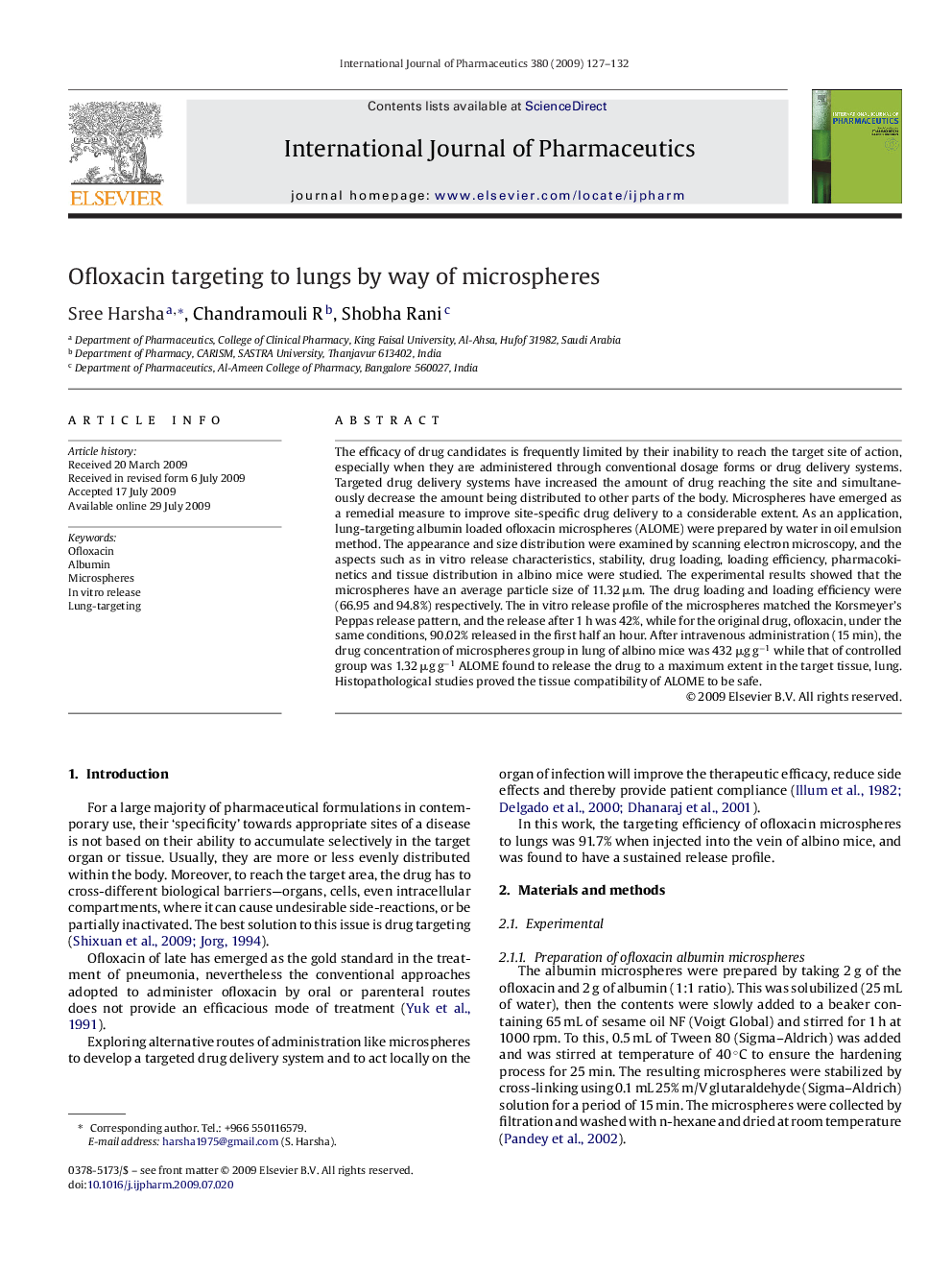| Article ID | Journal | Published Year | Pages | File Type |
|---|---|---|---|---|
| 2504373 | International Journal of Pharmaceutics | 2009 | 6 Pages |
The efficacy of drug candidates is frequently limited by their inability to reach the target site of action, especially when they are administered through conventional dosage forms or drug delivery systems. Targeted drug delivery systems have increased the amount of drug reaching the site and simultaneously decrease the amount being distributed to other parts of the body. Microspheres have emerged as a remedial measure to improve site-specific drug delivery to a considerable extent. As an application, lung-targeting albumin loaded ofloxacin microspheres (ALOME) were prepared by water in oil emulsion method. The appearance and size distribution were examined by scanning electron microscopy, and the aspects such as in vitro release characteristics, stability, drug loading, loading efficiency, pharmacokinetics and tissue distribution in albino mice were studied. The experimental results showed that the microspheres have an average particle size of 11.32 μm. The drug loading and loading efficiency were (66.95 and 94.8%) respectively. The in vitro release profile of the microspheres matched the Korsmeyer's Peppas release pattern, and the release after 1 h was 42%, while for the original drug, ofloxacin, under the same conditions, 90.02% released in the first half an hour. After intravenous administration (15 min), the drug concentration of microspheres group in lung of albino mice was 432 μg g−1 while that of controlled group was 1.32 μg g−1 ALOME found to release the drug to a maximum extent in the target tissue, lung. Histopathological studies proved the tissue compatibility of ALOME to be safe.
